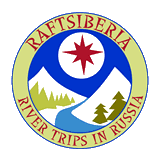

Lake Baikal
Lake Baikal is a unique phenomenon of the world and the people of Siberia consider it sacred. It is the deepest lake on Earth at 1,620 meters (5,314 feet) deep. Lake Baikal is 636 km long and has an average width of 48 km. Its water capacity is 23 thousand cubic kilometers which is one-fifth of the fresh water of the Earth excluding glaciers.
The water of Lake Baikal is very transparent. It has 336 rivers which bring their water into the lake and the only Angara River flows out. The ice cold water of Lake Baikal gives life to numerous unique species of fish and animals including the omul' and the nerpa (Baikal seal). The eastern part of Lake Baikal is a vast wilderness and is almost unpopulated.
Lake Baikal is surrounded by mountain chains such as the 2840 meter Mt. Barguzinskiy, 2371 meter Khamar-Daban, and 2572 meter Baikalskiy. The Stanovoe, North Baikal, and Patomskoye plateaus are situated to the east of Lake Baikal. Some peaks of these plateaus reach an altitude of over 3000 meters. The highest mountain chains have alpine relief with cirques, sharp rock edges, and pyramid-shaped tops created by glaciation. The mountain chains are often cut by narrow 600 to 1000 meter deep river valleys.
Northwest of Lake Baikal is occupied with permafrost and the mountains are covered with taiga. The lianas of wild grape can be found on the Khamar-Daban chain as well as the famous Blue Siberian spruce tree. The forests are rich in berries and mushrooms. The fauna is typical for East Siberia and includes elks, Manchzhurian and roe deer, bears, lynxes, gluttons, sables, stoats, squirrels, chipmunks, and various birds including the rare white-tailed bald eagle. Sable and squirrel are common and the objects of fur hunting. There are many mosquitoes, midges, and horseflies in the forests.
![]() RaftSiberia (916) 624-5189
RaftSiberia (916) 624-5189
PO Box 3184, Rocklin, CA 95677
© 2003-2018